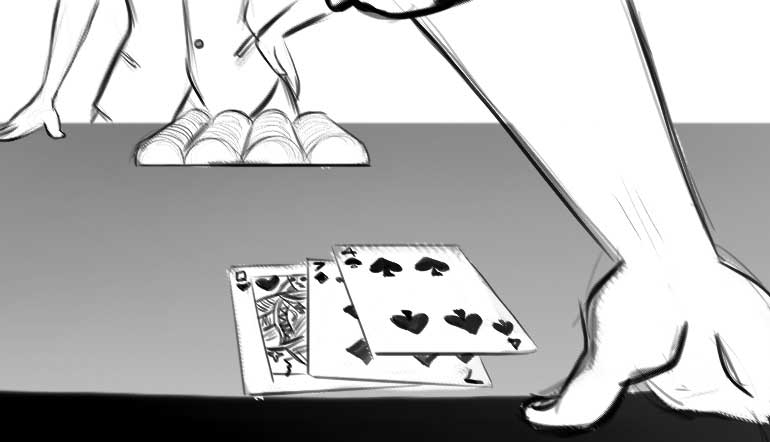WHAT ARE THE PROS AND CONS OF BLACKJACK CARD-COUNTING TEAMS?
This is the sixth, and last, article in a series on card counting. In the previous articles, I covered:
- How casinos catch card counters
- What casinos do if they catch you card counting
- How casinos can get away with tossing out card counters
- How you can get away with card counting
- How aggressive card counting works
This last article focuses on team play, which was popularized via the 2008 movie 21 that popularized the adventures of a team of students from MIT that won millions using this tactic.
Table of Contents
History
Frank Schipani (the pseudonym for Al Francesco) is widely recognized in blackjack circles as the creator of the concept of forming a team of card counters to attack casinos.
In the 1960s, Francesco was successfully winning money by card counting, but then casinos started banning him from playing. That’s when he devised a new way for a card counter to beat the casinos undetected; namely, playing together on teams.
In the 1970s, his teams traveled to casinos all over the world and won millions. One of the famous members of his teams was Ken Uston, who subsequently exposed the teams’ methods in his book The Big Player.
Nevertheless, Francesco continued to train and bankroll teams for many years. Moreover, his team-play techniques have been used by countless numbers of other teams, including the MIT team.
Francesco is often referred to as the “Godfather of Blackjack,” and his peers recognized his accomplishments in 2002 when he was inducted into the Blackjack Hall of Fame.
After the publication of Uston’s book, casinos became wise to the techniques of team play and Francesco’s team couldn’t play in Las Vegas for fear of being detected. The team eventually disbanded. However, even though Uston killed the “golden goose,” Francesco eventually forgave him.
How Team Card Counting Works
Blackjack teams use slightly different techniques but the most popular is as follows.
- Several skilled card counters get together and form a team. They each put up a share of the team bankroll (e.g., $10,000 each).
- Card counters, known as “spotters,” are positioned at different tables and make minimum bets but keep the count.
- When the count becomes favorable, the spotter discreetly signals another team player (known as the “Big Player” or “BP”) to enter the game and fire away with big bets.
- When the count tanks, the spotter signals the BP to exit the game.
- The BP waits patiently until another spotter calls him into a game.
There are variations on the above technique but this gives you a general summary of how team play works.

Advantages of Team Card Counting
Before Francesco’s team play approach, casinos would watch a suspected solo card counter’s betting pattern. If he fluctuated his bets, it was an indication that the player was card counting.
Casinos never considered a coordinated attack by a team. Therefore, by using spotters and BPs, the team was able to disguise the fact that they were card counting.
The second advantage of team play is that the hourly profit potential is much greater than playing solo. Part of this has to do with the fact that the BPs make very large bets when they have the mathematical advantage.
Additionally, the number of hands played per hour goes up dramatically compared to playing solo, and the risk of ruin can be less.
Profit Potential
Here’s an example of the profit potential of team play from Colin Jones’s excellent book, The 21st Century Card Counter.
“Imagine you and a friend each have $5,000 and perfect card-counting skills,” he notes in the book. “You might expect to each generate $10 per hour in Expected Value (i.e., profit) playing separately However, if you combine your money into a $10,000 bankroll, you can each generate $20 per hour.”
There are other benefits of team play that include:
- The camaraderie of practicing together and watching the improvement in each player’s skill level.
- The motivational support you get from other team players especially when you are having a really bad session.
- Get into the long run much more quickly than if you play solo.
- The team approach allows the Expected Value to catch up to the Standard Deviation more quickly than playing alone.
Managing Teams
Successful blackjack teams have a strong team manager. Some of his duties include:
- Recruiting and training players
- Creating team standards and a policy manual
- Determining bankroll requirements, bet spreads, and associated risks
- Tracking expenses
- Holding team meetings
- Motivating team members
- Soliciting outside investors
- Managing very large team bankrolls
- Determining the payouts for team members
- Determining the optimal number of BPs and spotters
- Determining the ratio of spotters per BP
- Deciding on where to play, what the makeup of the team would be, and when to get out of Dodge
Additionally, and most importantly, team leaders are responsible for handling “emergencies” that could arise. When a team is profitable, they earn about 30% of the profits. However, when a team is unprofitable, the team leader usually gets the blame.
One added note: Each team compensates the players and outside investors slightly differently. Here is one example: outside investors receive 50% of the profits and individual team members are paid in direct proportion to the hours they play, irrespective of their individual results.
See the suggested books at the end of this article for more information on this important topic.
Outside Investors
Most successful card-counting teams solicit outside investors who put a large sum of money toward the team’s bankroll and expect a return on their investment.
The bigger the team’s bankroll, the greater the profit a team can earn. This is a common practice nowadays to fund a team’s bankroll.
Reasons Teams Fail
Not all blackjack teams succeed. Some fail for any one of the following reasons:
- Poor leadership
- Not carefully screening and constantly testing members
- Not trusting other team members
- The pressure of mentally dealing with the downswings in bankroll
- Starting without a sufficient bankroll
- Mistakes in the call-in by the spotter or BP
- Mistakes in keeping the count accurately
- Team members who are not dedicated, or worse, cheat
- Bad habits of a team member (drugs, booze, philandering, etc.)
- Failing a polygraph test
- Mistakes in distributing and handling of money
- Determining team expenses versus player expenses
- Knowing and sticking to a timed playing session
- Accurately keeping the team’s “financial books”
- What to do if a player quits
- Being thrown out of too many casinos
- Currency issues when traveling outside the USA
- Constant travel
One way to avoid the above pitfalls is to read and adhere to the advice from several blackjack team leaders and members in the following publications:
- Chapter 11 in Don Schlesinger’s book, Blackjack Attack: Playing the Pros’ Way, which contains a copy of a “Blackjack Team Handbook.”
- Chapter 8 in Colin Jones’s book, The 21st Century Card Counter.
- Chapters 27‒33 in Rick Blaine’s book, Blackjack Blueprint.
